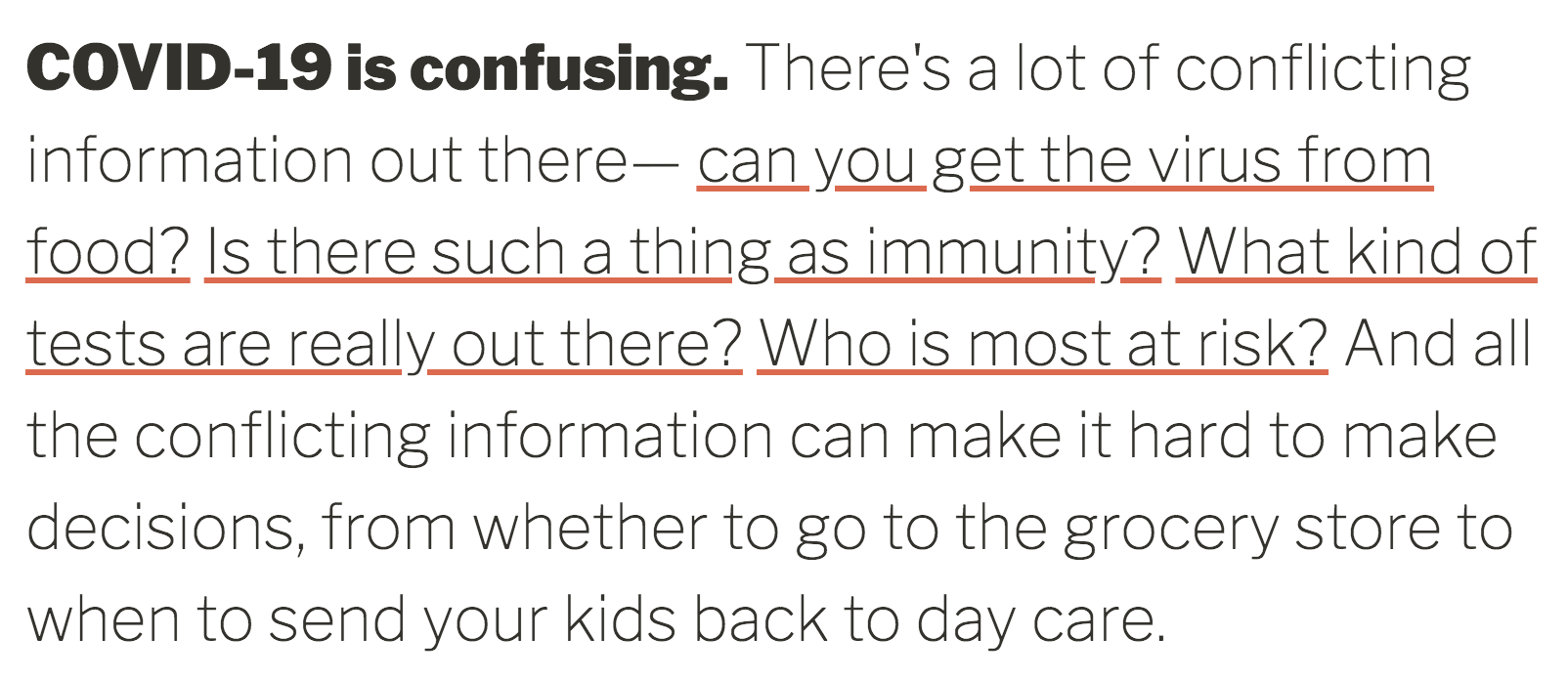
Emily Oster’s Expecting Better: Why the Conventional Pregnancy Wisdom Is Wrong — and What You Really Need To Know, first published in 2013, became something of a bible for hundreds of thousands of women who found that What to Expect When You’re Expecting just wasn’t cutting it. The Brown economics professor followed that book with another bestselling evidence-based parenting guide, Cribsheet, in 2019, and since the beginning of this year has been writing the parenting newsletter ParentData.
Not surprisingly, ParentData has in recent weeks become a very COVID-19–focused newsletter — issues have covered topics like delivering alone, whether it’s a bad time to try to conceive, and whether kids can transmit the virus — and readers were hungry for more info.
On Thursday, Oster announced the launch of COVID-Explained. “Written with real science people” — including Galit Alter, a professor of medicine at Harvard Medical School and group leader of the Ragon Institute of MGH, MIT and Harvard, as well as medical students and researchers — the site aims to offer both quick answers and explainers to questions like “Can I get the virus from touching things at the grocery store?” “What is going on with kids and Kawasaki-like Syndrome?” and “Why should I wear a mask??”
“People have been asking me a lot of very specific questions, and as I was working on those in a one-off way, I realized that part of the thing people were struggling with is just not really understanding some of the underlying ways that the virus works,” Oster told me Thursday (generously taking a few minutes out of her morning kid-care-and-homeschool shift to talk to me).
Hell yeah! "Expecting Better, for COVID." For those unfamiliar with @ProfEmilyOster's work, it's all about detangling correlation and causation to create a real risk assessment – and empower you in your life decisions. Now for Covid. Brilliant. https://t.co/B1qR0NmC1L
— Jemimah Steinfeld (@JFSteinfeld) May 7, 2020
“If somebody touches the salad box at the grocery store and has COVID, and then I touch it three hours later, do I get COVID for sure? It’s easier to understand the answer to that if you understand how the virus gets into you.”
(For the record: “The coronavirus can survive for roughly 3 days on some surfaces, like plastic and steel, according to research. However, there is not much evidence that simply touching a surface contaminated with the virus is likely to put a person at large risk, unless the surface was very recently handled by someone actively spreading the virus.” Don’t touch your face while grocery shopping, and wash your hands when you get home.)
Oster thought about threading this material through the work she’s already doing — the newsletter, various articles and podcasts and interviews — but thought it was more helpful to have many answers in one place. “I’m getting great information from professional immunologists and virologists, but I had the sense that they were having a hard time communicating the details of the science to a broader audience,” she said. “That’s something I do a lot of — I think a lot about communicating complicated, science-y topics to a lay audience while retaining some of the nuance — and thought there was something to add there.”
In the case of the questions on the site, Alter and her graduate students and postdocs take a first pass at writing a draft of an answer, “more or less as if they were writing for a colleague,” Oster said. Then Oster and her team of graduate students and undergrads tackle the drafts, trying to illuminate them in areas where they are confusing and making sure that non-scientists can understand them.
“People are struggling to disentangle anecdotes from statistics, and how to think about probabilities,” she said.
One story causing recent panic among parents is a possible connection between COVID and Kawasaki Disease, a rare illness in children.
“Most experts agree that most children have mild cases of COVID, if they get it — they’re mild or asymptomatic, and there’s more disagreement about whether they spread to other people, but the basic fact of this is that for most kids COVID is very, very mild,” Oster said. “The Kawasaki thing may or may not be linked to COVID, but people see it and are like ‘Oh my God, it is really bad for kids.’ We’re glomming on to the last piece of information, the last study read. It’s very hard to continually look at all of the evidence together, and I think that’s part of what’s making it so hard to move forward on this.”
I know what I am finding frustrating. It can BOTH be true that (1) kids are at low risk and (2) there are some rare serious complications which we want to be aware of and on the lookout for. Pointing out (1) doesn't mean ignoring (2) and pointing out (2) doesn't negate (1).
— ProfEmilyOster (@ProfEmilyOster) May 5, 2020
Well-meaning mainstream news coverage can confuse and scare people, as The Atlantic’s Ed Yong noted this week in the aftermath of a much-criticized Los Angeles Times story about “mutant strains” of the coronavirus.
“It would be helpful if there was a little bit more reflecting of the kind of broader consensus in some of the articles about new findings,” Oster said. “There needs to be a little more care taken in making sure that, when an article reports on some new piece of research, A) is that piece of research peer-reviewed, and B) what do we already know about the subject in this context? That’s been missing more frequently than I would like in some of this coverage.” COVID-Explained will try to rectify that.